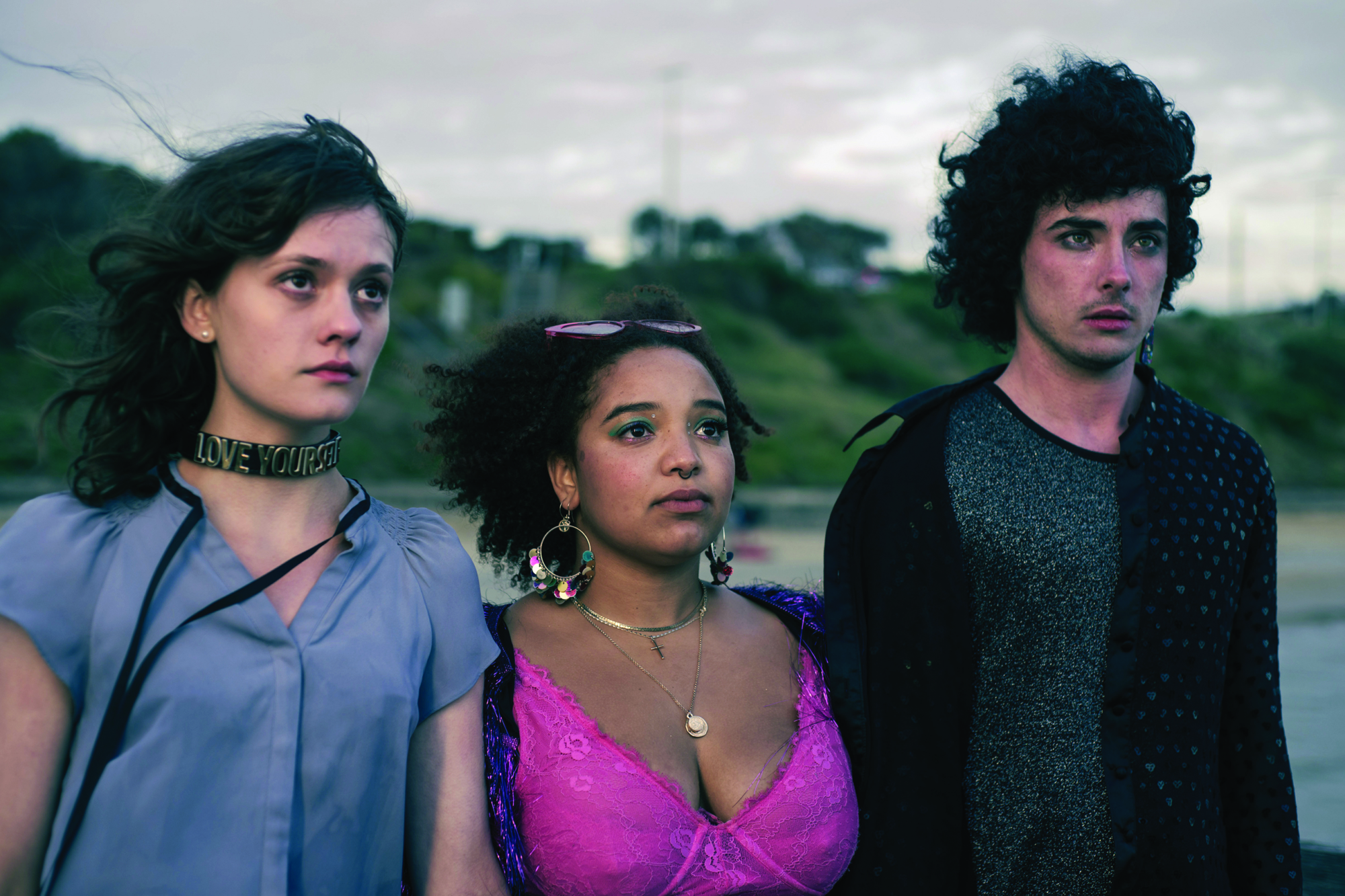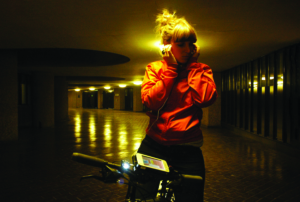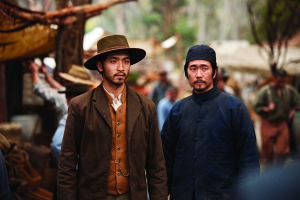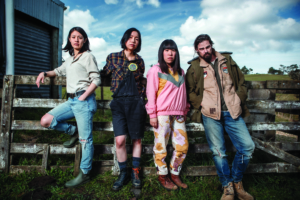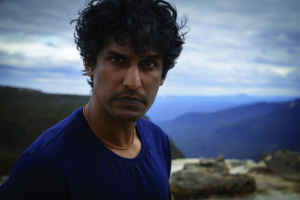Leveraging the popularity of TikTok as a space for LGBTQIA+ youth to find community and voice, the 2021 Melbourne-shot web series Scattered tells a coming-of-age story of friendship and grief – all in thirty-eight pithy episodes shot in vertical format and ranging from thirty to fifty-nine seconds in length. Filmed and released in early 2021, the series taps into the surrogate communities of young queer TikTok users that the platform has fostered over the course of the COVID-19 pandemic. The joy of Scattered is that it not only represents the queer chosen family, but also makes an art of subverting screen forms. The seriesis not just TikTok as many might know it, notable for its lingua franca of dance challenges, lip-synced performances to (phone) camera, micro cooking hacks and videos of baby animals – all set to saccharine pop – that are then riffed on, appropriated and circulated; rather, Scattered can better be thought of as a playfully queer web series that uses the affordances of TikTok’s algorithm to find its audience. Because in the digital world of attention economies, eyeballs, ‘likes’ and shares are the currency.
Ashes of time
The three friends at the centre of Scattered – raucous Sami (Zenya Carmellotti), secretly heartbroken Bo (Kurt Pimblett) and straight-as Jules (Campbell Connelly) – wake up on the beach after what seems to have been a wild night on the town. Or that’s what the flashbacks tell us. Apart from their hangovers, something else is wrong: their friend Wil is missing. It is only at the end of the first episode, which runs for all of forty-seven seconds, that we learn that Wil has recently died. After taking Wil – or, to be specific, his ashes – out for the send-off he deserved, which includes visiting sites of sentimental significance such as a drag-king club, minigolf and karaoke, the trio have misplaced the urn. What ensues over the remainder of the series’ punchy micro episodes is a race against time to retrace their movements, retrieve the urn and meet Wil’s parents at the pier at sunset for the scattering ceremony.

Scattered, produced by Hayley Adams and Michelle Melky and written by Adolfo Aranjuez, Kate Darrigan and Logan Mucha (who also directs), is the first TikTok series to be funded by Film Victoria and Screen Australia. It is also the most expensive TikTok series ever made, as revealed during a short behind-the-scenes video that is inserted among the flow of episodes.[1]Scattered TikTok post dated 6 June 2021, <https://www.tiktok.com/@scatteredseries/video/6970550861487541505>, accessed 19 November 2021. Scattered was shot on location in Melbourne in early 2021, during a brief hiatus in between lockdowns; in fact, as Adams tells me in conversation, the shooting wrapped just hours before the city’s third lockdown was announced in February. The first episode was released on 17 May with subsequent episodes uploaded daily. This reflects a trend that is becoming more popular with streaming services as Netflix’s rivals move away from dropping an entire season in favour of the more traditional broadcast format of making people wait, usually for a week – which, in time-compressed TikTok language, is roughly equivalent to a day.
Scattered follows on from the success of breakout web series Love Songs, also produced by Adams and Melky. The first narrative web series made exclusively for TikTok, Love Songs has accumulated over 20 million views at the time of writing; its second season, released in partnership with Tinder, dropped in early May 2021. The platform brings with it specific structural requirements; while Scattered follows some web-series conventions, such as a hook that leads into the next episode, Melky points out that ‘for the [TikTok] platform it just has to be juicy, it just has to be good, stories just have to make sense overall’.[2]Michelle Melky, quoted in Stayci Taylor, ‘Just Ask “What If?” and Go from There: The Role of Mainstream Story Structures in Women’s Web Series Script Development’, Studies in Australasian Cinema, vol. 15, no. 1–2, 2021, pp. 55–6. And Scattered, which takes more risks than Love Songs –in both form and subject matter – is juicy and does work as a whole. In fact, it’s difficult to overstate how much story and character are packed into these tiny episodes.
Scattered adds a very contemporary perspective to a long lineage of LGBTQIA+ television shows that foreground the importance of friendship. Examples of this include such seminal shows as Queer as Folk and The L Word, along with the more recent AIDS-era-London-set It’s a Sin and Australian breakout lesbian web series Starting from … Now. Scattered similarly centres on the importance of friendship as a kind of chosen family; however, it is only through Wil’s death and the proceeding twenty-four hours that this connection becomes catalysed. Each of the characters in Scattered reflects a different relationship with Wil and, over the series, comes to accept their significance in his life as rivalry gives way to a more empathic understanding of difference. For Jules, Wil was her best friend from childhood, loyal to the core; but she also expresses worry that they were growing apart in recent years, and hints that perhaps his newer lifestyle with party-loving friends was a factor. For Sami, Wil was the queer friend on the dance floor who understood her like no-one else, while, in return, she showed him how to have a good time – at least, that’s her narrative. And for Bo, Wil was the love interest whose feelings he denied. Together, the three friends make up facets of Wil’s life as they work together to recover the ashes and be there for one another in his absence.
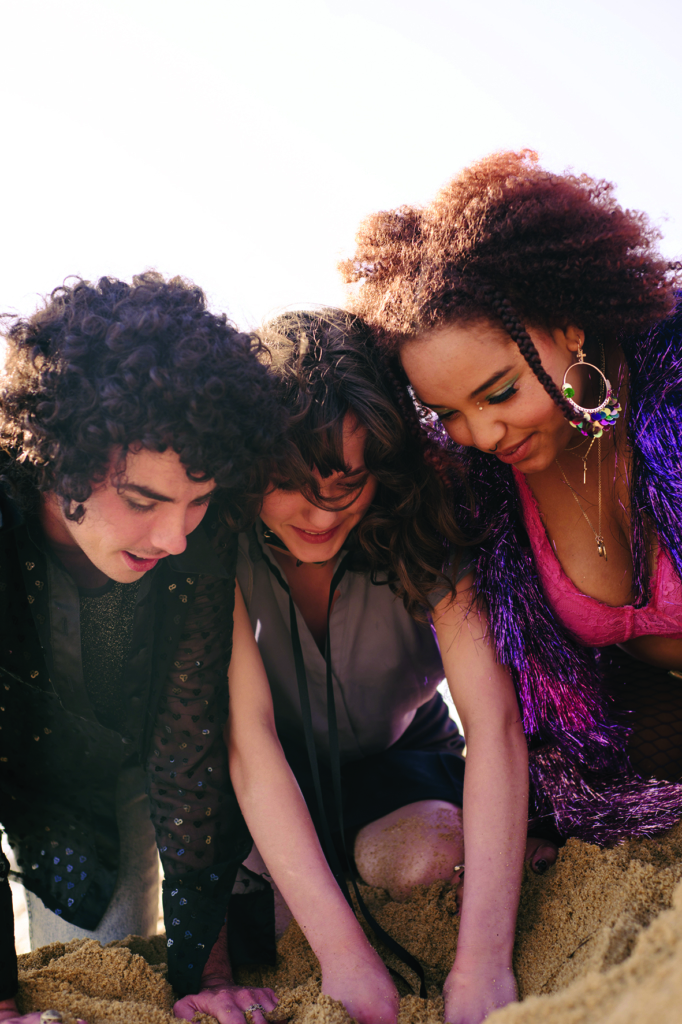
Scrolling in lockdown
TikTok, owned by Chinese parent company ByteDance, is a social media app on which users create short videos to be shared. These are often vernacular, personal and humorous. The user works the algorithm by ‘liking’ content, and is thus able to tap into communities and bubbles of shared interests and identities. TikTok has been the most downloaded app over the past two years;[3]See ‘TikTok Is the World’s Most Downloaded App, Instagram 2nd; Check Full List’, HT Tech, 8 November 2021, <https://tech.hindustantimes.com/tech/news/tiktok-is-the-world-s-most-downloaded-app-instagram-2nd-check-full-list-71636347233632.html>, accessed 19 November 2021. with its micro videos, trainable algorithms and endless streams of punchy content, it would seem to be the platform par excellence for our weary, brain-fogged times. In an article in The Guardian titled ‘How Coronavirus Helped TikTok Find Its Voice’, columnist Sirin Kale writes, ‘There’s a simple reason why people are flocking to TikTok: it’s a superb time waster.’[4]Sirin Kale, ‘How Coronavirus Helped TikTok Find Its Voice’, The Guardian, 26 April 2020, <https://www.theguardian.com/technology/2020/apr/26/how-coronavirus-helped-tiktok-find-its-voice>, accessed 5 October 2021. Feminist performance scholars Melissa Blanco Borelli and madison moore write that they stopped watching television altogether and started exclusively watching TikTok, as it encapsulated a communal experience of ‘daily life, imagination, pleasure, and ways of coping with Covid-19 lockdowns happening across the world’.[5]Melissa Blanco Borelli & madison moore, ‘TikTok, Friendship, and Sipping Tea, or How to Endure a Pandemic’, The International Journal of Screendance, vol. 12, 2021, p. 300.
Intentionally or otherwise, Scattered is an uncannily clever title for a mini web series made specifically for the TikTok platform. ‘Scattered’ may refer not only to the literal end point of the narrative, but also to the increasing effect that social media and digital multitasking are having on our attention spans and mental health: it’s how we feel at the end of the day when we have spent hours fulfilling small tasks that have not amounted to any deep thinking or enjoyable productivity. This has been exacerbated by the need to spend more time at home, with the lines between work and leisure subsequently becoming ever more blurred. Movement from one screen to another, and to yet another, fragments (or scatters) our attention in many virtual directions. To use a term coined by journalist Brigid Schulte, this is ‘time confetti’[6]Bridget Schulte, Overwhelmed: Work, Love, and Play when No One Has the Time, Sarah Crichton Books, New York, 2014. – the little bits of time here and there that accumulate and create an obstacle to ‘flow’. Flow, in turn, is defined by psychologist Mihaly Csikszentmihalyi as ‘the state in which people are so involved in an activity that nothing else seems to matter’.[7]Mihaly Csikszentmihalyi, Flow: The Psychology of Optimal Experience, HarperCollins, New York, 1990, p. 4. Discussions of flow are very much in the zeitgeist at the moment as we collectively try to make sense of our new realities during the COVID-19 pandemic.
Scattered is an uncannily clever title for a mini web series made specifically for the TikTok platform. ‘Scattered’ may refer not only to the literal end point of the narrative, but also to the increasing effect that social media and digital multitasking are having on our attention spans and mental health.
In what has been a deeply unsettling time for many, TikTok has provided a space to ameliorate boredom and disconnectedness. The platform is also, according to Kale, something of the rebel child of the social media family:
On Instagram, we are primped and preening, on Twitter, loudmouthed and strident, but on TikTok, we can just be weird. Which makes it the perfect platform to ride out a pandemic that has nearly one-third of the world’s population trapped at home.[8]Kale, op. cit.
Blanco Borelli and moore adopt a more balanced analysis of TikTok, suggesting the platform is both ‘a product of neoliberalism’s marketing and commodification of the self through social media’[9]Blanco Borelli & moore, op. cit., p. 300. while also embracing the concept of a digital commons through ‘accessibility and usability’.[10]ibid. TikTok can be many things to many people; it proves the adage that its value lies in not what the platform is, but what you do with it.
Hashtags and bubbles
Social media ethnographer Crystal Abidin writes that TikTok users and creators are quick to adapt to the ‘latest trends and viral practices’ through their use of ‘hashtags, keywords, filters, audio memes [and] narrative memes’.[11]Crystal Abidin, ‘Mapping Internet Celebrity on TikTok: Exploring Attention Economies and Visibility Labours’, Cultural Science Journal, vol. 12, no. 1, 2020, p. 79. A lot of thought has obviously gone into the hashtags used throughout each post on the Scattered page, as this is the primary method through which creators get noticed and build an audience through the algorithms – and the way TikTok uses algorithms to present appealing content makes it all the harder for users to resist engaging with the platform. By tagging strategically, TikTok creators may get noticed and build an audience. While the way the platform’s hashtags work remains something of a mystery, Adams tells me that, unlike content posted on other social media platforms, each TikTok video must ‘stand on its own’ to go viral.[12]Hayley Adams, personal correspondence with author, 7 October 2021. In writing this article, I decided to explore Scattered’s hashtags to see what bubbles were coalescing around each of them and, in particular, what different content might be associated with each of the LGBTQIA+ related ones. Beginning with Episode 1, I clicked on #gaytok, #lgbtq, #aussiegay and #queer.

I first explored #gaytok, where I encountered a fabulously dressed influencer called Nate, who says that if he’s influencing my behaviour, I have a problem. In the next video, a queer, cowboy-hatted friend calls him ‘Mum’ because he’s ‘stuck camping with heteros’ who want to give him an IPA beer rather than an Iced Caramel Macchiato. There were also drag performances, a girl preparing for dates with another girl and, finally, raccoons; the demographic in these clips is young and from diverse cultural backgrounds. #lgbtq yielded more varied results, with a video about a TikToker’s dad’s 73-year-old neighbour coming out as gay and another about a talking mynah bird, which led me to #talkingbird and then back. #Aussiegay was understandably more local, with user @the_gay_bestfriend_98 (aka Jordiii) featuring prominently. I was then taken to the information-oriented @rainbowhistoryclass, where I learned about the LGBTQIA+ history of the Anzac diggers (including drag performances in a prisoner-of-war camp). As I followed the stream, I felt I was being followed by Jordiii through her many pieces to (phone) camera. Meanwhile, on #queer, there was comedy, some mad voguing, short personal narratives and a non-binary TikToker offering a comparative analysis of the pockets on men’s pants compared to women’s. I also learned about the dark web and the prevalence of ‘honeypot’ sites. Through this constant scrolling, I began to understand the allure of TikTok and the slot-machine-like surprises it throws up.
Over the course of Scattered’s posts, these hashtags were still used, but the producers also began to insert more strategic industry hashtags such as #Skins (after the British TV sensation of the same name), #HBO and, of course, #Netflix. Melky points out that, unlike the new, niche audiences that web series must cultivate through marketing, TikTok provides a ready-made audience.[13]Taylor, op. cit., p. 57. Adams informs me that hashtags are only one of the many possible tools in the TikToker’s toolkit, emphasising that ‘the hashtags only matter if the content is good’.[14]Adams, op. cit.

The future is unwritten
The darker side of TikTok, however, is that, ultimately, the algorithms are opaque and the broader agenda of the platform remains unclear. While TikTok presents opportunities for creators to tap into ready-made audiences, the platform has also come under fire in recent years for suppressing identities and voices. In particular, LGBTQIA+ videos have been censored, even in countries where homosexuality is legal.[15]Alex Hern, ‘Revealed: How TikTok Censors Videos That Do Not Please Beijing’, The Guardian, 25 September 2019, <https://www.theguardian.com/technology/2019/sep/25/revealed-how-tiktok-censors-videos-that-do-not-please-beijing>, accessed 1 October 2021. Furthermore, political speech as well as videos by creators who are considered ‘too ugly, poor, or disabled’ have been suppressed.[16]Sam Biddle, Paulo Victor Ribeiro & Tatiana Dias, ‘Invisible Censorship’, The Intercept, 16 March 2020, <https://theintercept.com/2020/03/16/tiktok-app-moderators-users-discrimination/>, accessed 6 October 2021. At the same time, TikTok has also become a site for social activism through creative and highly personal communication methods.[17]Abidin, op. cit.
What is clear is that TikTok’s short format allows emerging creators to tell stories in new and novel ways. For example, the winner of the A$15,000 TikTok pitch ‘Got a Minute?’ at the 2021 Screen Forever conference was an animated series about relationships between inanimate objects.[18]See Sean Slatter, ‘Ani-Mates Wins “Got a Minute?” Pitching Competition’, If.com.au, 17 February 2021, <https://www.if.com.au/ani-mates-wins-got-a-minute-pitching-competition/>, accessed 19 November 2021. With content getting shorter and shorter, it’s hard to imagine what might emerge next. In the meantime, TikTok provides a seemingly endless stream of rabbit holes, bubbles and delights for those wanting quick hits – and series such as Scattered are ideally positioned to ride the wave of snappy and good-looking content with stories that are nuanced and give voice to diverse communities.
Endnotes
| 1 | Scattered TikTok post dated 6 June 2021, <https://www.tiktok.com/@scatteredseries/video/6970550861487541505>, accessed 19 November 2021. |
|---|---|
| 2 | Michelle Melky, quoted in Stayci Taylor, ‘Just Ask “What If?” and Go from There: The Role of Mainstream Story Structures in Women’s Web Series Script Development’, Studies in Australasian Cinema, vol. 15, no. 1–2, 2021, pp. 55–6. |
| 3 | See ‘TikTok Is the World’s Most Downloaded App, Instagram 2nd; Check Full List’, HT Tech, 8 November 2021, <https://tech.hindustantimes.com/tech/news/tiktok-is-the-world-s-most-downloaded-app-instagram-2nd-check-full-list-71636347233632.html>, accessed 19 November 2021. |
| 4 | Sirin Kale, ‘How Coronavirus Helped TikTok Find Its Voice’, The Guardian, 26 April 2020, <https://www.theguardian.com/technology/2020/apr/26/how-coronavirus-helped-tiktok-find-its-voice>, accessed 5 October 2021. |
| 5 | Melissa Blanco Borelli & madison moore, ‘TikTok, Friendship, and Sipping Tea, or How to Endure a Pandemic’, The International Journal of Screendance, vol. 12, 2021, p. 300. |
| 6 | Bridget Schulte, Overwhelmed: Work, Love, and Play when No One Has the Time, Sarah Crichton Books, New York, 2014. |
| 7 | Mihaly Csikszentmihalyi, Flow: The Psychology of Optimal Experience, HarperCollins, New York, 1990, p. 4. |
| 8 | Kale, op. cit. |
| 9 | Blanco Borelli & moore, op. cit., p. 300. |
| 10 | ibid. |
| 11 | Crystal Abidin, ‘Mapping Internet Celebrity on TikTok: Exploring Attention Economies and Visibility Labours’, Cultural Science Journal, vol. 12, no. 1, 2020, p. 79. |
| 12 | Hayley Adams, personal correspondence with author, 7 October 2021. |
| 13 | Taylor, op. cit., p. 57. |
| 14 | Adams, op. cit. |
| 15 | Alex Hern, ‘Revealed: How TikTok Censors Videos That Do Not Please Beijing’, The Guardian, 25 September 2019, <https://www.theguardian.com/technology/2019/sep/25/revealed-how-tiktok-censors-videos-that-do-not-please-beijing>, accessed 1 October 2021. |
| 16 | Sam Biddle, Paulo Victor Ribeiro & Tatiana Dias, ‘Invisible Censorship’, The Intercept, 16 March 2020, <https://theintercept.com/2020/03/16/tiktok-app-moderators-users-discrimination/>, accessed 6 October 2021. |
| 17 | Abidin, op. cit. |
| 18 | See Sean Slatter, ‘Ani-Mates Wins “Got a Minute?” Pitching Competition’, If.com.au, 17 February 2021, <https://www.if.com.au/ani-mates-wins-got-a-minute-pitching-competition/>, accessed 19 November 2021. |
